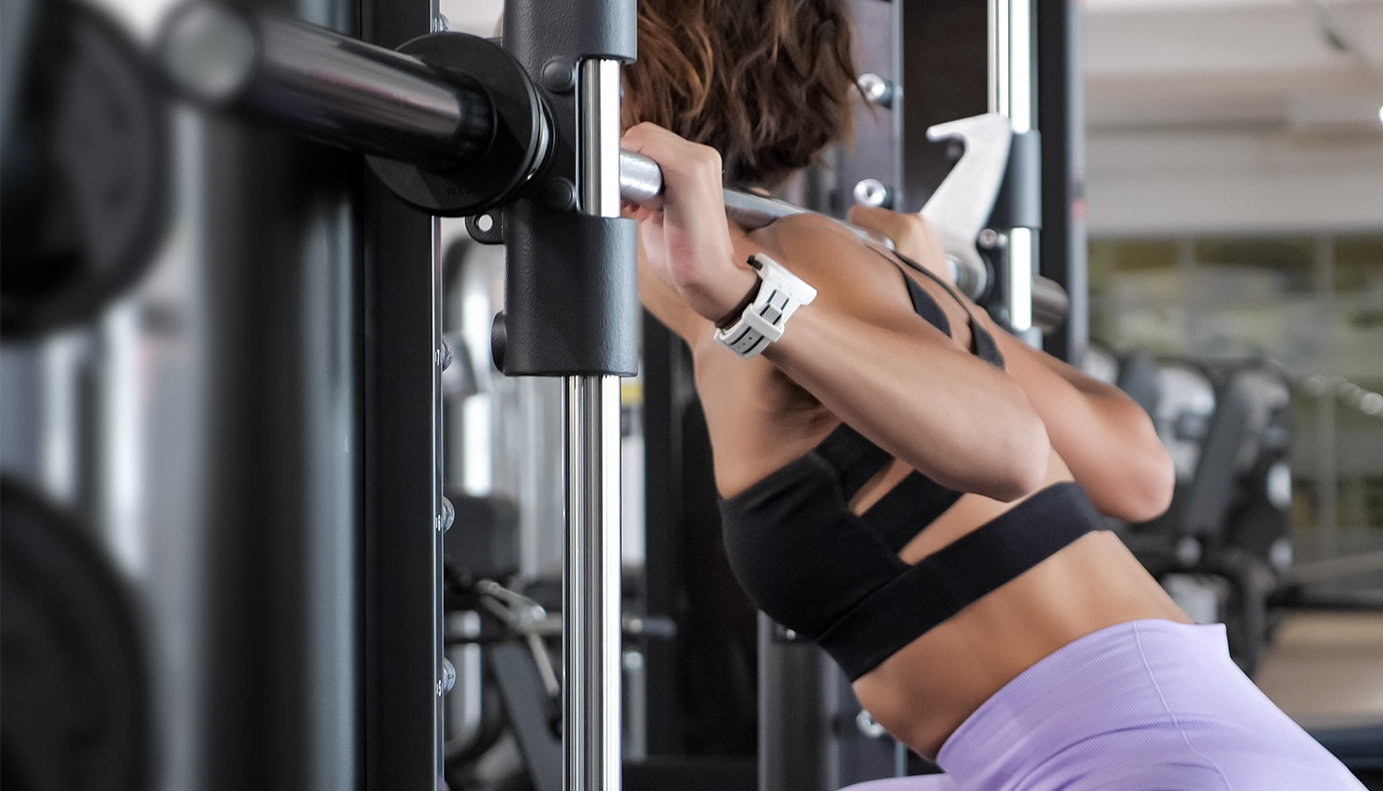Cardio Exercise vs. Strength Training: Which is Better for Your Fitness Goals?

Everybody has a unique fitness journey with specific goals they set for themselves. Whether strength training or cardio exercise is better for you depends on different factors, which we’ll cover in a moment.
As fitness specialists, Akfit is often asked about the differences between cardio and strength training. Our knowledge comes from a deep passion for fitness combined with our expertise in exercise equipment. As a trusted fitness specialty store, AKFit combines the latest research with our own experience to help customers find the answers they seek to make an informed decision.
In this article, we compare cardio vs. strength training to help you decide which of the two strategies is right for your fitness objectives.
In this article …
- What is Cardio Excercise?
- Pros & Cons of Cardio Exercise
- Getting the Most Out of Cardio Exercise
- What is Strength Training?
- Pros & Cons of Strength Training
- Getting the Most Out of Strength Training
- So Which is Better?
What Is Cardio Exercise?
When people talk about cardio workouts, they’re referring to exercises that get your heart pumping. After all, cardio is short for cardiovascular, which refers to anything related to the heart and blood vessels.
Cardio exercise is often also called aerobic exercise. That’s because it’s a form of physical exercise that increases the level of oxygen in your blood (aerobic means “with oxygen”). Many types of activities fall within the cardio category, including these:
- Cycling
- Spinning
- Swimming
- Jogging
- Brisk walking
- Running
- Rowing
- Hiking
- Dancing
- Kayaking
- Skiing
- Stair climbing
- Jumping rope
- Kickboxing
- Rollerblading
- Mountain climbing
- Martial arts
- Aerobics classes
- And more
When you do cardio exercises, you engage in repetitive motions that work your muscles and increase your heart rate. Your breathing becomes faster and deeper, enabling you to use oxygen efficiently. With higher levels of oxygen circulating through your body, you’re able to keep exercising longer without tiring as quickly.
Cardio workouts can be low or high intensity, or somewhere in between. You get to choose depending on your current physical condition, health status, personal preferences, endurance, and fitness goals.
Benefits Of Cardio Exercise
At whatever level of intensity you choose to work out, you can enjoy numerous benefits from cardio exercises. According to the scientific journal Circulation, the benefits of cardiovascular exercise include a better balance of cholesterol levels in your body, lower blood pressure, and a healthier body weight.
Other benefits include:
- Making your heart and muscles stronger
- Improving your heart health
- Serving as an appetite suppressant
- Elevating your mood and making you feel happier
- Preventing heart disease and diabetes
- Reducing joint pain
- Improving your brain health
- Helping you sleep well
- Burning calories
- Helping you achieve and maintain your ideal weight
- Strengthening your immune system
Pros & Cons Of Cardio Exercise
Every activity has its pros and cons. There are clear benefits to cardio exercise, as we outlined above, but frequency matters. Too much of a good thing can lead to issues related to overworking parts of your body, while too little may not give you all the benefits listed earlier.
Pros of cardio exercise include:
- Highly accessible: Just about anyone can do some type of cardio.
- Provides many options: Many different types of activities provide cardio benefits.
- Work out indoors or outdoors: Cardio can be done in any setting, including in your home gym.
- Year-round opportunities: Even in inclement weather or on cold winter days, you can do cardio exercises using treadmills, ellipticals, spin bikes, rowers, and other indoor fitness equipment.
- Adjustable: You can tweak the frequency of exercise sessions as well as the duration of each session and the intensity level to meet your needs.
- Start where you are: Regardless of your current shape, you can take steps to start a cardio routine and build up over time.
- Burns calories and fat: If you want to trim down, do cardio.
Cons of cardio exercise include:
- Muscle loss: Cardio is great for losing weight, but you may end up losing muscle mass too if your fitness regimen involves cardio exercise only.
- Overtraining: If you do too much cardio, or if you focus on just one type of exercise, you risk overtraining certain areas while ignoring others.
- Fatigue: Doing cardio too frequently or too intensely, without enough breaks in between, can lead to mental and physical exhaustion.
- Fat retention: Despite all that activity, overloading your body can actually backfire and lead to a less efficient metabolic rate and the risk of retaining fat.
Getting The Most Out Of Cardio Exercise
Now that you know more about cardio, it’s time to make the most of your workouts. As a general rule of thumb, it’s a good idea to do cardio exercise at least three days a week. Here’s how to maximize benefits from your cardio exercise routine.
- Vary it up: Make sure to vary your routines to exercise different groups of muscles.
- Work with a trainer: A trainer can help you figure out the best pace you should go and the frequency of workouts for optimum results.
- Follow recommended guidelines: According to the Centers for Disease Control and Prevention (CDC), adults need to get at least 150 minutes of aerobic exercise of moderate intensity every week.
- Get the right equipment: To make sure cold weather won’t mess with your fitness goals, get cardio equipment such as treadmills, upright bikes, and rowers that you can use at home, even when you can’t go outside.
What Is Strength Training?
The purpose of strength training is to build up your muscle mass, strength, and endurance. Also called resistance training, strength training is not so much about getting your heart rate up and working up a sweat. It’s more about using weights to provide external resistance to different muscle groups, for the purpose of toning your body.
Strength training can easily be done through a home gym with equipment specially designed for weight lifting. Activities that foster strength training include:
- Lifting weights
- Walking up hills
- Push-ups
- Sit-ups
- Squats
- Using equipment like grip strengtheners, kettlebells, and weight plates
- Discus throwing
- Chin-ups
- Bench pressing
- Using resistance bands
- And more
With strength training, you’re using resistance to increase lean muscle mass. People of all ages can benefit from strength training, including older adults who naturally lose some muscle mass as they age.
What type of strength training you do, and how often you do it, will determine how much muscle mass you build. Everybody has a mental picture of how they would like their body to look. If you want to be a bodybuilder and achieve a highly muscular look, strength training will definitely be a big part of your journey. But even if you just want to look trim and fit without building big muscles, strength training can help you achieve the lean, fit physique you’re going for.
Benefits Of Strength Training
When you engage in strength training on a regular basis, you’ll enjoy a range of benefits, including the following:
- Increasing your endurance
- Protecting your bone health
- Strengthening muscles
- Maintaining an active metabolism
- Improving body mechanics, including posture and balance
- Easing symptoms from some chronic conditions
- Boosting energy levels
- Reducing abdominal fat
- Increasing flexibility
Pros & Cons Of Strength Training
As with cardio, it’s important to be aware of the pros and cons associated with strength training. When it comes to lifting weights or moving objects around, safety becomes an important consideration. Doing strength training correctly will reduce your risk of injury.
The pros of strength training activities include:
- Easily done at home: Compact machines are available for home use for building upper body strength, lower body strength, and core strength.
- Work out regardless of the season: You don’t have to wait for a sunny day to train; you can go to the gym or use your own home gym equipment.
- Get bigger muscles: While cardio doesn’t typically build muscles, strength training does.
- Weightlifting builds focus and reduces stress: If you want to relax and refocus, lifting weights can be very effective.
- Improve your coordination: Strength training can help you be more poised and agile.
- Build confidence: Not only does resistance training build your body, it also boosts your self-confidence.
Some of the cons of resistance training are:
- Not a solo activity: Weight lifting is most effective and safest when done with a trainer or spotter.
- Burns fewer calories: When you lift weights, you don’t burn as many calories as when you swim, for example.
- Risk of injury: If done improperly, lifting heavy objects poses an injury risk.
Getting The Most Out Of Strength Training
Successful strength training requires a level of commitment along with a sensible, responsible approach to fitness. You can’t be impulsive or careless; on the contrary, weight lifting requires participants to be mindful and focused.
For optimum results, keep the following in mind:
- Warm-up before you lift: Before you lift, be sure to warm up by walking or stretching to prepare your muscles.
- Work your way up to heavier weights: Trying to lift too much too soon is not good for you physically or mentally.
- Use your momentum effectively: When moving weights or doing resistance exercises like push-ups, getting into a rhythm by using your momentum will help you keep going longer.
So Which Is Better?
As you’ve probably figured out, both are good for you! But doing them correctly is the trick to getting the most out of your cardio exercise routine and strength training efforts.
Cardio exercise is the right choice when your goals are to:
- Lose weight
- Burn calories
- Maintain heart health
- Increase immunity
- Slim down
- Improve energy levels
Strength training is the right choice when you want to:
- Sculpt your body
- Strengthen muscles
- Strengthen bones
- Increase endurance
- Promote flexibility
- Improve your posture and physique
Incorporating both cardio exercise and strength training into your fitness routines each week will bring you the right balance of physical and wellness benefits you’re looking for.
Turn To AKFIT For Help With Your Fitness Journey
We want to make fitness accessible to everyone. That’s why Akfit provides a full range of exercise equipment and accessories to meet your needs. We also want to make sure you use your equipment correctly. We’re available to answer any questions you may have about the proper usage of exercise equipment.
Our treadmills, ellipticals, steppers, rowers, bikes, and other cardio equipment can help you get the aerobic workout you want.
We offer functional trainers, benches, home gyms, kettlebells, and more to meet your specific strength training needs.
Your fitness goals are as unique as you are. We’re here to help guide you for safer, more effective workouts. Browse through our quality fitness products to see how you can expand your home gym and make it work for you.













